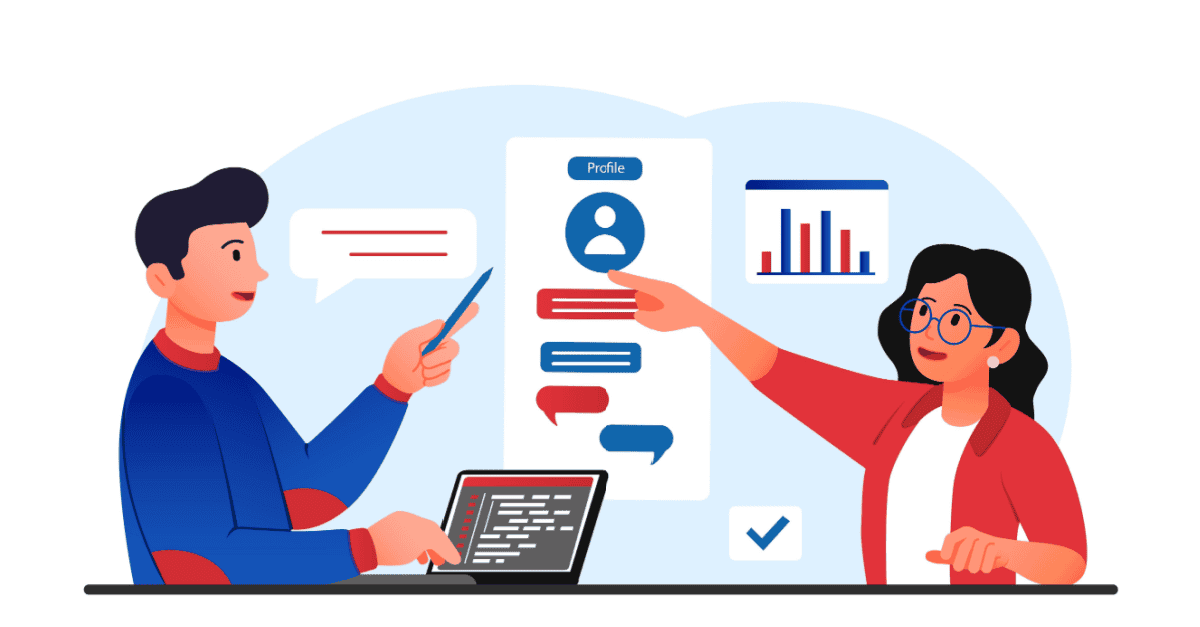
Winning Over Your Customer With Emotional Control
Written By: Gina Trimarco
Disrupt Your Customer’s Negativity Bias
This article is part of a series by Gina Trimarco called Spontaneous Selling & Service. This series focuses on real sales and customer service scenarios that required off-the-script spontaneity tactics to ensure recovery, retention, and referrals. In this story, a business becomes the vendor of choice when their competitor fails to employ the same amount of emotional control in a stressful situation.
Whether your business is big or small, well known internationally or locally, your customer’s perception of how they are treated is their reality. And the bigger the business, the bigger the expectations for an excellent customer experience. If you want to stand out against the competition, you must engage the customer with behavior that disrupts their negativity bias.
Past Experiences Create Expectations
It was a holiday weekend in the tourist destination where I live. Going to a restaurant can be a challenge, especially in the days of COVID. Long wait times to be seated are expected. If you choose to go out for a meal, you choose to be patient and wait.
My friend wanted to go to a popular chain restaurant for breakfast. It wasn’t my favorite, but I knew what to expect. The food was consistent, as were their long lines. Upon arrival, the parking lot looked okay. There were plenty of parking spaces, which was a good sign. We didn’t see a line at the hostess stand, either.
Control Your Emotions Or They Will Control You
We asked to be seated for two, and the hostess took us to a small table next to a dirty one that was considerably larger. I could already sense my friend’s frustration. He hates small tables, especially when there are so many empty ones.
Before the hostess could even put the menus down, my friend asked for a larger table. The hostess froze in her tracks, not prepared for the request. Then, she instantly blurted out, “You’ll have to go back to the hostess stand and wait.”
Under his breath, his immediate response to me was, “Let’s go. I don’t want to stay.” He had an emotional reaction and so did she. Neither of them had emotional control at that moment.
Fight Or Flight Response
While I can easily get stirred over poor customer service, I was a little more rational and suggested we see what she came up with. We proceeded back to the stand and watched the hostess talking to another hostess in the middle of the dining room. The second hostess quickly asked me if we were leaving, as she could tell my friend wanted to bolt.
I said no and asked how long the wait would be. (Note that there was no one else waiting for a table and half of the tables were empty.) The second hostess said it would be ten more minutes. That’s when my amygdala (the part of your brain dedicated to fight or flight responses) kicked in. I said to my friend, “Let’s go.”
Prior to this, my brain was in a rational state, thinking it made more sense to wait it out than to drive to the next place for a similar experience.
Always Prepare For The Objection
As the customer, our perception was our reality. The restaurant was empty and slow. Walking in the door, we maintained an expectation for a specific experience based on first impressions, branding, and past experiences.
This situation could have been easily and quickly recovered if the hostess had the skills to control her emotions and reactions, while using the right words in the moment. A simple phrase such as, “I’d be happy to seat you somewhere else. If you don’t mind waiting at the hostess stand, I’ll get a table cleaned off right now.” Even if she didn’t have a table available, she would have bought some time with that response. Our monkey brains wouldn’t have gotten the best of us.
The other thing she should have done was be prepared for the customer’s objection. As salespeople, we know that we can anticipate objections and resistance from customers.
Differentiate With Exceptional Customer Experiences
I grew up in the restaurant business and started as a hostess. I quickly learned how to read all types of customers (senior citizens, families, dating couples, etc.) and to anticipate their requests, such as preferring a booth over a table, or a table by the window.
Before seating anyone, I always had a “Plan B” to seat them somewhere else. I understood the need to do what was best for the business, such as “rotating the server’s stations” to ensure every employee was treated fairly, especially because the wrath of a server could get ugly. My job was to give the customer an exceptional experience.
We must get better at being spontaneous and in the moment, beyond the script. That comes down to leveraging emotional intelligence, not just understanding customer service basics.
Creating an exceptional experience is what differentiates your business from the many businesses that do almost exactly what you do. This differentiation will make you the “vendor of choice”.
Customers Respond to Competitive Differentiation
Still hungry, we drove to a local, family-owned restaurant. Upon arrival, there was nowhere to park. We had to park in the grass outside of the restaurant. Once again, my fight or flight reaction kicked in. I instantly worried that we’d be waiting forever to get seated and wished we would have just stuck it out at the chain restaurant.
I feared that we had traded one bad experience for another less-than-stellar one. And we were getting hangry. All of this flashed through my mind in mere seconds. I was already experiencing negativity bias.
Disrupting Negativity Bias
There were customers everywhere and no real organization when we walked in, but that lasted only a few seconds before the cashier said someone would be right with us and then a hostess appeared. She didn’t even ask how many people would be dining in. She already had menus in hand, said, “Right this way,” and seated us in a big comfy booth.
With my brain still prepared for the worst, I noticed that almost every table was taken. They were slammed busy, but that didn’t get in the way of their top-notch service. Our server approached us within the textbook requirement of two minutes to get our beverage order and she was happy to serve us. We were able to get seated, order our food, eat, and leave in less than an hour. They “turned the table” in under an hour to generate more revenue. I assumed the worst would happen with this local restaurant, but I was wrong! They were a small business with an exceptional experience that clearly drove their business to success.
Got Grit? Successful Businesses Do
Now more than ever, employees need soft skills training to interact and engage with customers. Train your employees to tell customers what they can do for them, not what they can’t.
At the off-brand restaurant, a family-owned business, it was most likely easier for them to pivot and do what made the most sense for their business, customers, and employees. The small business doing big business is one with grit, resilience, and a determination to thrive.
The owners are in the trenches. They understand the needs of all stakeholders involved. As a company grows, it needs to remember to maintain its grit and agility.
Most importantly, an exceptional customer experience is a game-changer for success.
Learn the keys to thinking on your feet in stressful situations in Gina’s FREE Book of Play ebook.
About the author
Gina Trimarco
Gina Trimarco is a Master Trainer and leadership strategist who helps organizations re-humanize relationships…
Get FREE Sales Training Delivered to Your Inbox
Join more than 360,000 professionals who get our weekly newsletter.
Related Articles

Learn Online
Self-paced courses from the
world's top sales experts

Virtual Training
Live, interactive instruction in small
groups with master trainers

Coaching
One-to-one personalized coaching
focused on your unique situation






